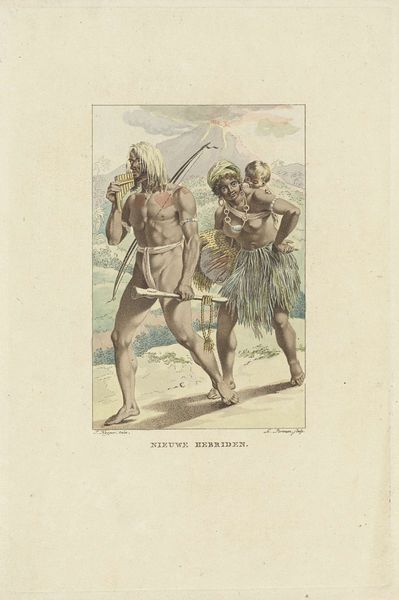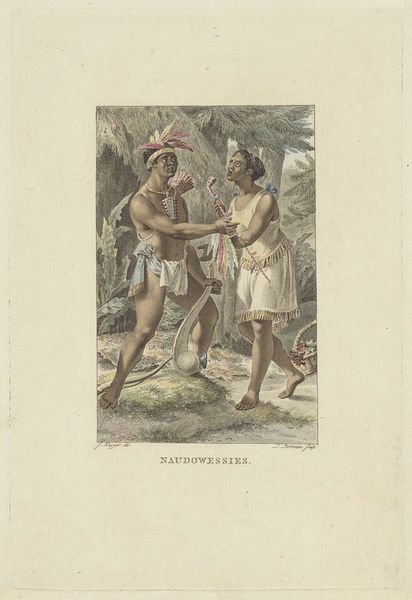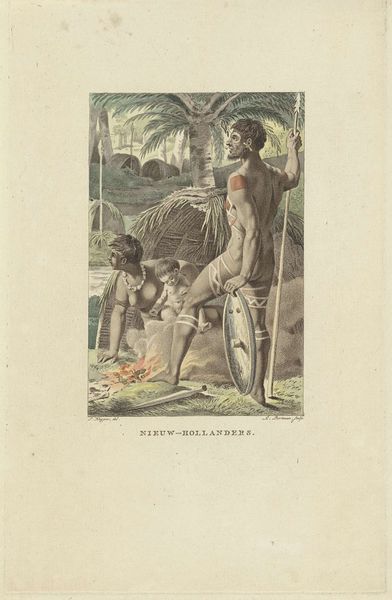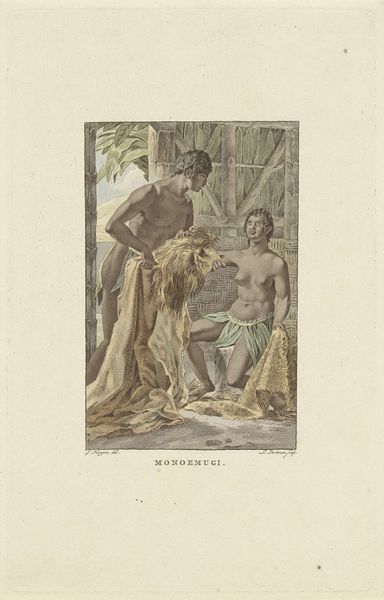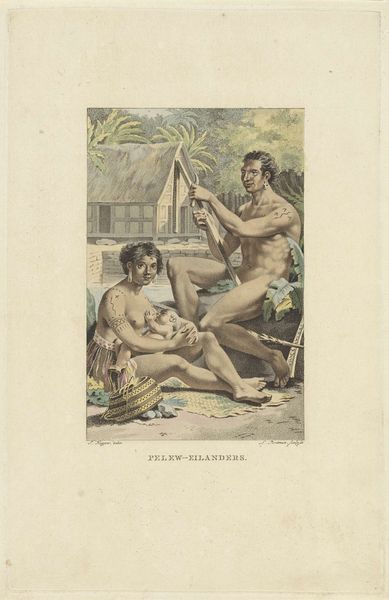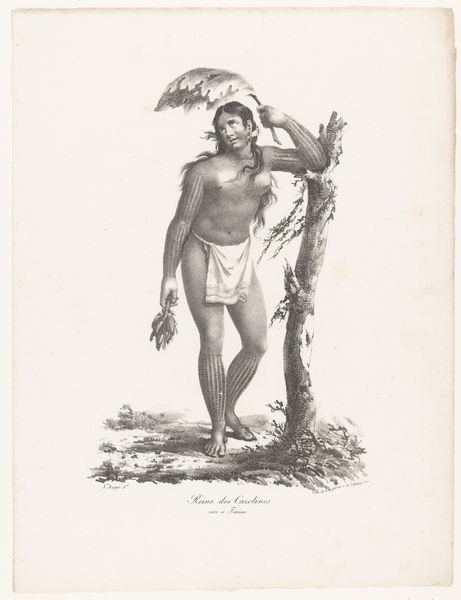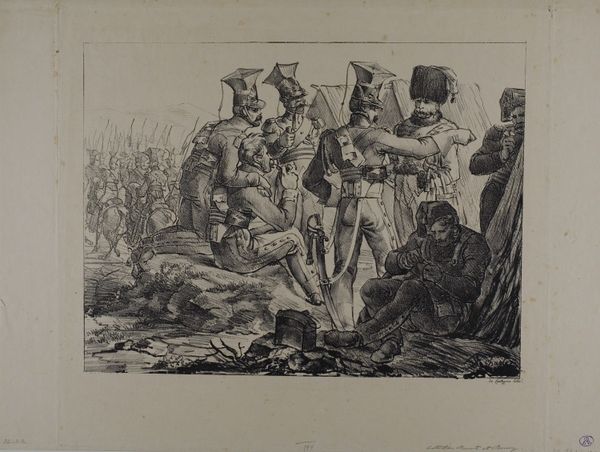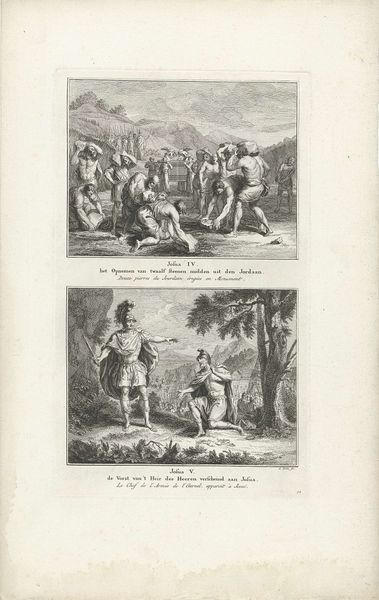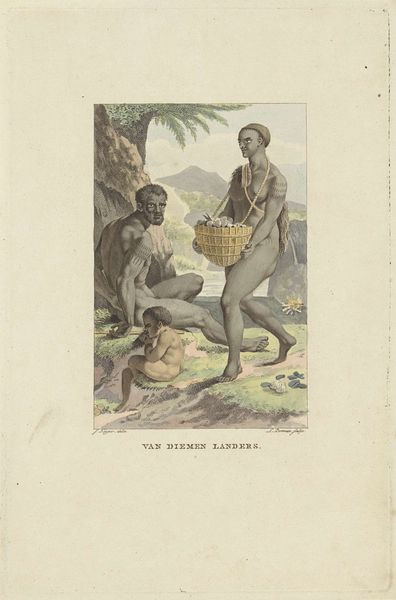
print, engraving
#
portrait
# print
#
engraving
Dimensions: height 243 mm, width 156 mm
Copyright: Rijks Museum: Open Domain
Ludwig Gottlieb Portman created this print, "Bewoners van Nieuw-Caledonië," which translates to "Inhabitants of New Caledonia," in the early 19th century using etching and engraving, processes capable of capturing fine detail and tonal variation. The print's physical properties offer clues to its cultural significance. The paper itself, likely handmade, reflects the era's production methods, while the etched lines required skilled labor and specialized tools. The process begins by coating a metal plate with wax or varnish, then using a sharp needle to draw an image, exposing the metal underneath. After the plate is submerged in acid, which bites into the exposed lines, ink is applied, and the plate is pressed onto paper. This technique enabled the mass production of images, facilitating the spread of knowledge, and in this case, a colonial gaze. Prints like these circulated widely, shaping European perceptions of distant lands and peoples, which reflect broader narratives of exploration, trade, and colonial expansion. Understanding the print's materials and production provides insight into its historical context and the complex interplay between art, labor, and cultural exchange.
Comments
No comments
Be the first to comment and join the conversation on the ultimate creative platform.
